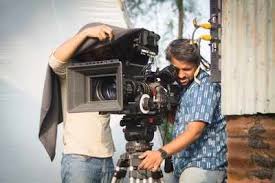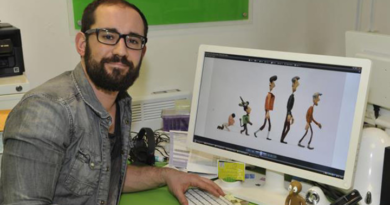Assistant Cameraman (1 years course)
Assistant Cameraman CLICK HERE
Brief Job Description: Individuals at this job are responsible to mark focus lengths
based on the required composition and focus and refocus the camera lenses during
shoots. They are also responsible to set-up/dismantle camera equipment.
Personal Attributes: This job requires the individual to judge distances and mark focus
lengths accurately. The individual must be creative and detail-oriented. The individual
must know and keep updated on the various camera equipment, shooting techniques
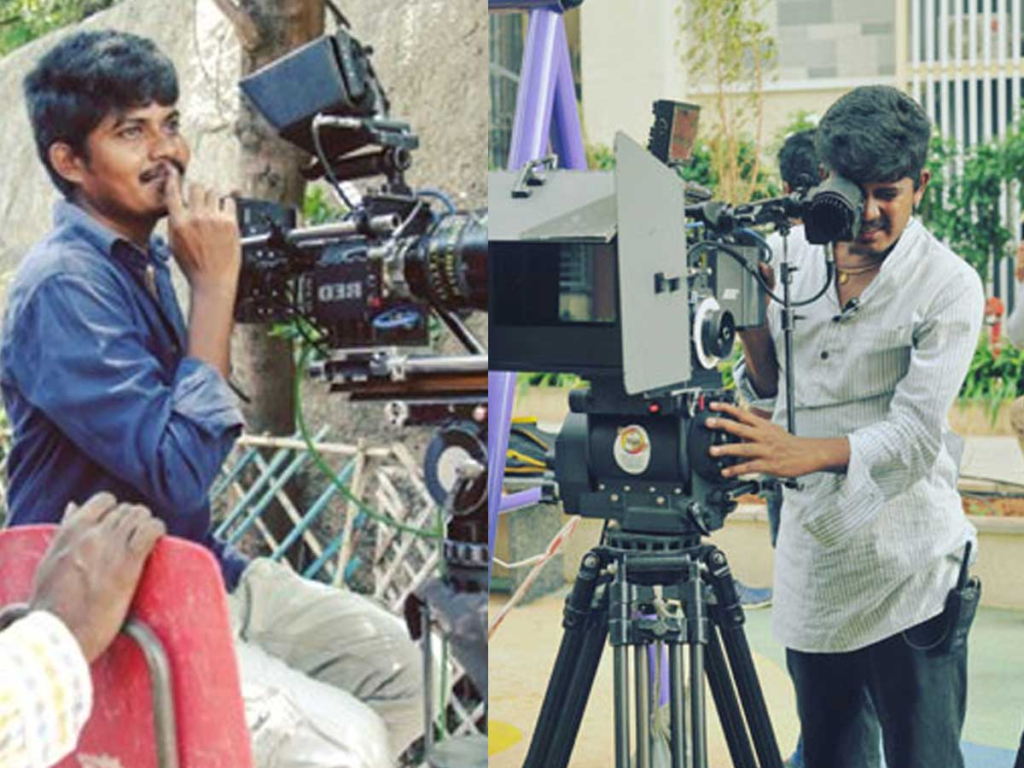
and mediums. The individual must have excellent communication skills and must
possess the ability to work collaboratively as a part of a team.
Qualifications Pack For Assistant Cameraman
Keywords /Terms
Description
Visual style Visual style comprises the look or appearance of the production including
the lighting, colours, shadows, sets, costumes, locations and the way they
will be captured on screen.
Creative brief Creative brief is a document that captures the key questions that serve as
a guide for the production including the vision, objective of the project,
target audience, timelines, budgets, milestones, stakeholders etc.
Shoot schedule Shoot schedule is a listing of the sequences/shots that need to be captured
on each shoot day
Multi-camera Multi-camera is a method of shooting where multiple cameras are used to
simultaneously capture different views/images
Budget Budget is an estimate of the total cost of production that may include a
break-up of cost components
Timelines Timelines is a listing of dates by which the production milestones/stages
need to be completed
Continuity Continuity represents the seemless transition from one shot to another
Script Script is a structured narrative of a story
Screenplay Screenplay is the script coupled with key characteristics of the scene and
directions for acting
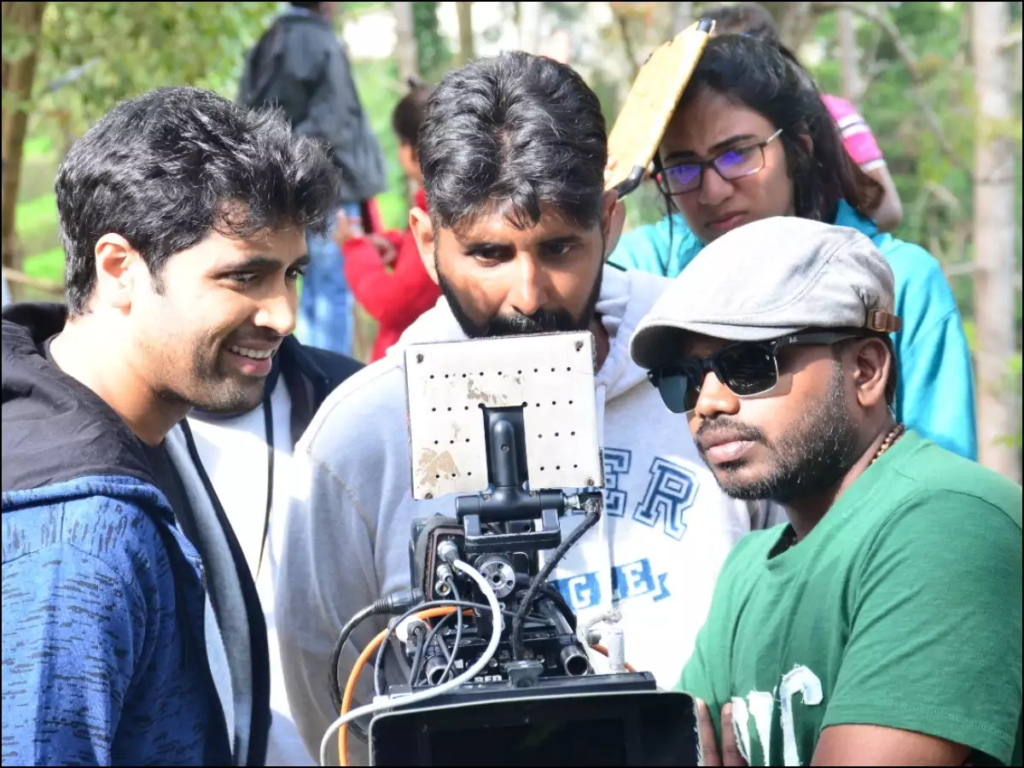
Post-production Post-production is the final finishing phase of the production, where the
raw footage is edited, special effects are added, music and sound are
integrated, colour correction is done etc.
Colour grading Colour grading is the process of enhancing and correcting the colours of
the final production
Digital intermediate Digital intermediate is the process where a film is digitised and the colour
and image characteristics are modified
Recce Recce is a detailed visual and technical assessment of the attributes and
suitability of a particular location for the shoot, usually through a personal
visit
Grips Grips is the department that specialises in mounting the camera on to
tripods, dollies, cranes and other platforms for shoots
Jib Jib is a device used for the movement of camera and operates like a seesaw,
with the camera at one end and the camera controls at the other
Lenses Lenses are used to capture images and are attached on to the body of the
camera
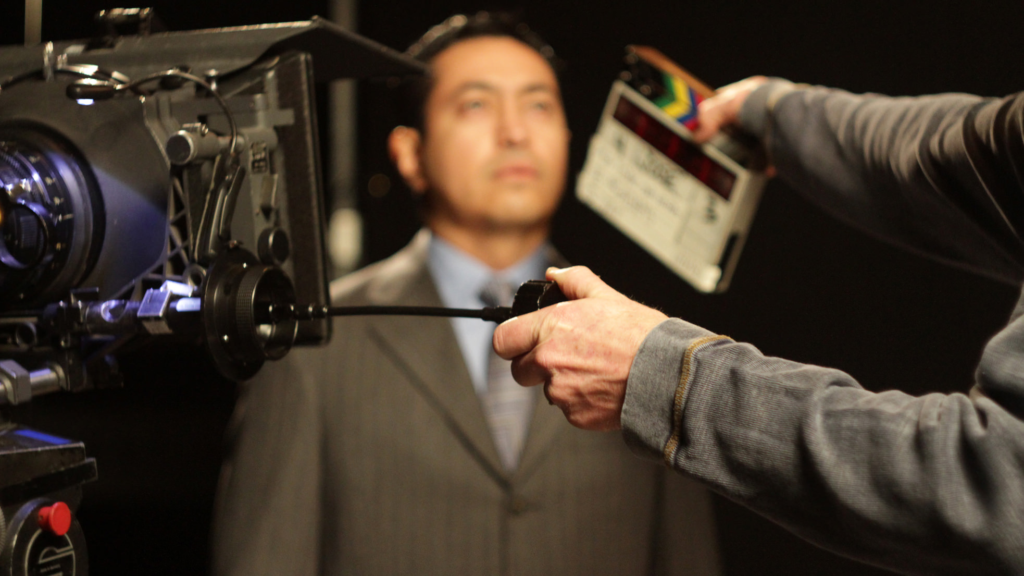
Filters Filters are used to alter the properties of light entering the camera lens.
They are also used to create a number of special effects
Dolly Dolly is a platform with wheels on which the camera can be mounted and
moved around during the shoots
Magazines Magazines are compartments within a camera that are used to hold the
film tape
Clapper board Clapper board is a slate that has information pertaining to each shot, used
as a guide to mark shots and aid matching image with sounds
Focus length Focus length is the angle of view from the lens
Framing Framing is how the artists, objects, sets, locations etc. are positioned
within the camera view for a single shot
Master shot Also known as a cover shot, this shot is a long sequence that establishes
an overview and aids assembly of smaller, closer shots with details
Sector Sector is a conglomeration of different business operations having similar
businesses and interests. It may also be defined as a distinct subset of the
economy whose components share similar characteristics and interests.
Sub-sector Sub-sector is derived from a further breakdown based on the
characteristics and interests of its components.
Vertical Vertical may exist within a sub-sector representing different domain areas
or the client industries served by the industry.
Occupation Occupation is a set of job roles, which perform similar/related set of
functions in an industry
Function Function is an activity necessary for achieving the key purpose of the
sector, occupation, or area of work, which can be carried out by a person
or a group of persons. Functions are identified through functional analysis
and form the basis of OS.
Sub-functions Sub-functions are sub-activities essential to fulfill the achieving the
objectives of the function.
Job role Job role defines a unique set of functions that together form a unique
employment opportunity in an organization.
Occupational Standards
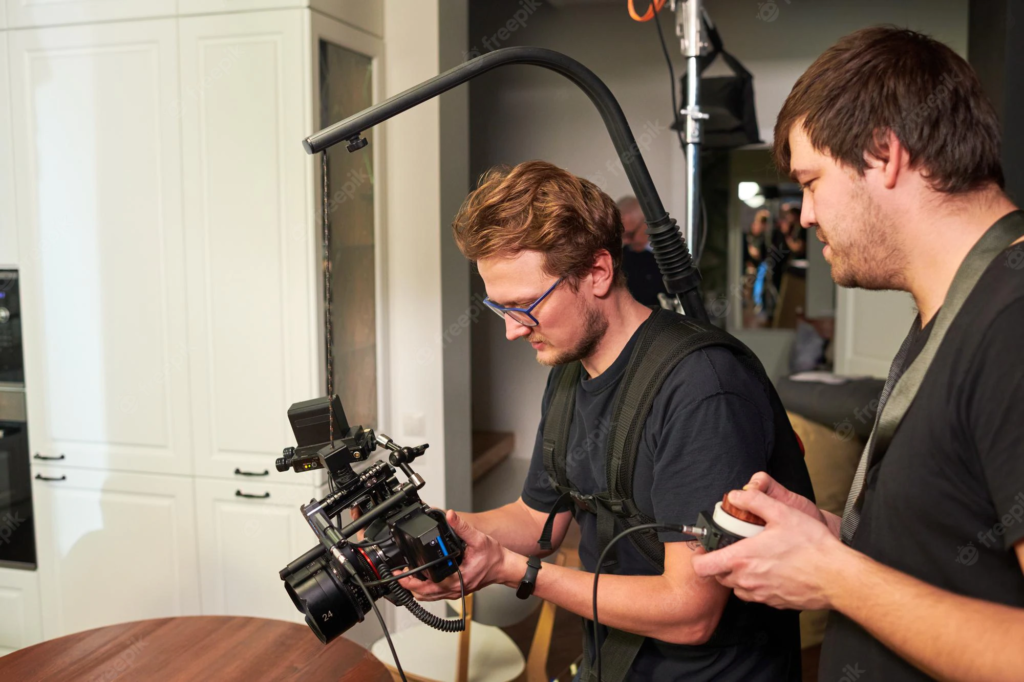
(OS)
OS specify the standards of performance an individual must achieve when
carrying out a function in the workplace, together with the knowledge and
understanding they need to meet that standard consistently. Occupational
Standards are applicable both in the Indian and global contexts.
Performance Criteria Performance Criteria are statements that together specify the standard of
performance required when carrying out a task
National Occupational
Standards (NOS)
NOS are Occupational Standards which apply uniquely in the Indian
context.
Qualifications Pack
Code
Qualifications Pack Code is a unique reference code that identifies a
qualifications pack.
Qualifications Pack(QP) Qualifications Pack comprises the set of OS, together with the educational,
training and other criteria required to perform a job role. A Qualifications
Pack is assigned a unique qualification pack code.
Unit Code Unit Code is a unique identifier for an Occupational Standard , which
isdenoted by an ‘N’.
Unit Title Unit Title gives a clear overall statement about what the incumbent should
be able to do.
Description Description gives a short summary of the unit content. This would be
helpful to anyone searching on a database to verify that this is the
appropriate OS they are looking for.
Scope Scope is the set of statements specifying the range of variables that an
individual may have to deal with in carrying out the function which have a
critical impact on the quality of performance required.
Knowledge and
Understanding
Knowledge and Understanding are statements which together specify the
technical, generic, professional and organizational specific knowledge that
an individual needs in order to perform to the required standard
Qualifications Pack For Assistant Cameraman
Keywords /Terms Description
NOS National Occupational Standard(s)
QP Qualifications Pack
NSQF National Skill Qualifications Framework
NVEQF National Vocational Education Qualifications Framework
NVQF National Vocational Qualifications Framework
Organizational Context Organizational Context includes the way the organization is structured and
how it operates, including the extent of operative knowledge managers
have of their relevant areas of responsibility.
Technical Knowledge Technical Knowledge is the specific knowledge needed to accomplish
specific designated responsibilities.
Core Skills/Generic
Skills
Core Skills or Generic Skills are a group of skills that are key to learning and
working in today’s world. These skills are typically needed in any work
environment. In the context of the OS , these include communication
related skills that are applicable to most job roles.
Set up camera equipment prior to shoot
Description This OS unit is about arranging for the delivery of camera equipment and setting up
for shoots
Scope This unit/task covers the following:
Prepare and arrange all the camera equipment for use during shoots
Monitor use of equipment during shoots
Performance Criteria (PC) w.r.t. the Scope
Element Performance Criteria
Prepare and arrange
all the camera
equipment for use
during shoots
To be competent, the user/individual on the job must be able to:
PC1. coordinate with logistics players, where required in the context of the role, to
have the equipment delivered to the vendor/own facilities (equipment can
include cameras, batteries, lenses, filters, grips, track, special effects
equipment, magazines, clapper boards, film stock/beta tapes/memory cards)
PC2. prepare equipment for shoot including unpacking, cleaning and assembling
cameras and lenses, loading the film stock into magazines, charging batteries
etc.
Monitor use of
equipment during
shoots
PC3. arrange for security and protection of the equipment during storage and
logistics
PC4. report any damages to the camera and production teams
PC5. ensure cameras are mounted on grips and the locks are fastened securely
Knowledge and Understanding (K)
A. Organizational
Context (Knowledge
of the company /
organization and its
processes)
The user/individual on the job needs to know and understand:
KA1. the equipment that can be sourced in-house and that needs to be sourced
through a vendor

KA2. the role and contribution of key departments be liaised with, especially lighting
and grips where the camera team has the maximum interaction
B. Technical
Knowledge
The user/individual on the job needs to know and understand:
KB1. how to select the most appropriate mode of transport and the most relevant
logistics provider
KB2. inventory management processes including receipt, issue and returns
KB3. appropriate documentation norms (e.g. challans, receipts etc.)
KB4. how to protect, pack and secure the equipment for storage
KB5. how to label, pack and store the equipment in extreme climatic and rough
environmental conditions
KB6. how to arrange and label camera equipment so that it is accessible for the
entire camera team
KB7. how to estimate the quantity of supplies for each shoot day
KB8. techniques of handling and maintaining the camera equipment
KB9. likely damage that may be caused due to incorrect handling and storage
KB10. the safety and security requirements for the equipment, including special
requirements, if any
KB11. how to load film stock into magazines, under specific conditions without
causing any damage/exposure
KB12. how to charge batteries and prevent accidental discharge
KB13. how to deal with exposed stock safely and securely
KB14. how to clean and test the cameras, lenses and magazines prior to shoot
including the appropriate method and material to be used
KB15. applicable health and safety guidelines, and ensuring that any risks to the
health and safety of the cast and crew are minimised
Skills (S) (Optional)
A. Core Skills/
Generic Skills
Writing Skills
The user/individual on the job needs to know and understand how to:
SA1. prepare a log of all the equipment to be used during each shoot day
SA2. track status against the checklist on a daily basis and note remarks, where
required
SA3. label equipment and supplies accurately
Reading Skills
The user/individual on the job needs to know and understand how to:
SA4. read the equipment user-manuals and handling specifications
SA5. read the safety considerations for the equipment being used

SA6. refer to the shoot schedules to determine how many shots are being covered
during a given day to ensure that adequate film stock and batteries are
available for use
Oral Communication (Listening and Speaking skills)
The user/individual on the job needs to know and understand how to:
SA7. report damage, if any to the equipment to the camera and production teams
SA8. discuss and agree on the list of equipment that needs to be prepared and kept
ready for use with the Camera team and Production Head
B. Professional Skills Plan and Organise
The user/individual on the job needs to know and understand how to:
SB1. plan work according to the requirements and agreed timelines
SB2. lay out Camera shooting equipment, including Camera Heads, magazines and
batteries, in an appropriate and accessible manner
Problem Solving
The user/individual on the job needs to know and understand how to:
SB3. identify any problems with successful execution of the task and resolve them in
consultation with the production team
Decision Making
The user/individual on the job needs to know and understand how to:
SB4. identify and establish a base on which to build the camera
Critical Thinking
The user/individual on the job needs to know and understand how to:
SB5. use any special requirements to ensure the safety and security of equipment
when left unattended or in use.
Customer Centricity
The user/individual on the job needs to know and understand how to:
SB6. ensure that all necessary equipment and materials available meets the
technical and artistic requirements of production.
Analytical Thinking
The user/individual on the job needs to know and understand how to:
SB7. determine the impact of the chosen equipment on the production
Prepare for shoot
Description This OS unit is about deciding the shot framing and composition, marking out the
camera positions and carrying out rehearsals prior to shoot
Scope This unit/task covers the following:
Understanding the focus requirements for different types of shots
Lay out marks on the set/props/floor to define artist paths and refine camera
positions/focus lengths during rehearsals
Marking out the focus lengths for each position
Performance Criteria (PC) w.r.t. the Scope
Element Performance Criteria
Understanding the
focus requirements
for different types of
shots
To be competent, the user/individual on the job must be able to:
PC1. establish, or support in establishing, the focus requirements for shots (eg: pan,
tilt, tracking, static, zoom, close-up, wide-shot, master shot, high/low, angle
shot, long shot and mid shot), based on the creative and technical
requirements of production
Lay out marks on the
set/props/floor to
define artist paths
and refine camera
positions/focus
lengths during
rehearsals
PC2. mark, or support in marking, the focus lengths/angle based on the required
composition (eg: positioning of elements within a frame), perspective (eg:
point of view) and aspect ratio (eg:relationship between width and height)
Marking out the
focus lengths for
each position
PC3. prepare, or support in preparing, a focus path for a sequence depending on the
movement, timing, start and finish points during shoots
PC4. report potential issues to the producer and director and relevant teams for
rectification
Knowledge and Understanding (K)
A. Organizational
Context
(Knowledge of the
company /
organization and
its processes)
The user/individual on the job needs to know and understand:
KA1. understand the overall style and creative aspects of the production
KA2. the role and contribution of key departments be liaised with, especially lighting
and grips where the camera team has the maximum interaction
B. Technical
Knowledge
The user/individual on the job needs to know and understand:
KB1. the principles of cinematography
KB2. understanding of optical theory
KB3. understanding of still photography would be an added advantage
KB4. principles of composition and continuity
KB5. the focus requirements and camera position(s) for each shot
KB6. the relationship between the distance of the camera from the subject, the
height at which the camera is placed and movements and how these effect the
shot composition
KB7. the aspect ratio required for each shoot and the aspect ratio in which the final
product will be seen by the audience
KB8. how to judge focus lengths to ensure that the shot view will be sharp and
achieves the desired framing and composition
KB9. how to frame shots to ensure continuity and seamless transition from one shot
to another
KB10. the various types of cameras, lenses and equipment available in the market
KB11. how to update operating skills on new cameras, lenses and equipments in the
market
KB12. how to test cameras, lenses and equipment and discover faults, if any
KB13. how to place cameras according to production requirements in case of multicamera shoots
KB14. how to place set, props and equipment so as to capture the required frame in
the shot and ensuring that they do not obstruct the camera view
KB15. the mood of each shot and determine shot requirements accordingly
KB16. how to measure the distance between the artists/objects/subjects and the
camera(s) to ensure the shot gets taken correctly
KB17. how to observe for continuity issues that may impact actual shoots
KB18. test focus lengths to ensure they have been set properly
KB19. the limitations on camera movements – based on the positioning of the camera,
sets, props and equipment during shoots
KB20. applicable health and safety guidelines, and ensuring that any risks to the
health and safety of the cast and crew are minimised
Skills (S) (Optional)
A. Core Skills/
Generic Skills
Writing Skills
The user/individual on the job needs to know and understand how to:
SA1. note the specifications for each shot – camera distance, height, focus length,
aspects ratios, timing, start and finish points etc. to refer to during the shoot
SA2. notes for the director, dop and production team that would help them guide
the movement of artists, props and equipment during shoot
Reading Skills
The user/individual on the job needs to know and understand how to:
SA3. read and understand the script in detail
Oral Communication (Listening and Speaking skills)
The user/individual on the job needs to know and understand how to:
SA4. understand and clarify requirements during production recces and meetings
SA5. discuss the creative and visual requirements of the shot with the DOP and
producer
SA6. agree on the positioning of the shot with the DOP, production team and artists
SA7. discuss the camera path and timing with the camera and production teams,
discuss problems and modifications required
SA8. communicate any problems that may affect the desired composition
SA9. guide the artists on their movements and timing
B. Professional Skills Plan and Organise
The user/individual on the job needs to know and understand how to:
SB1. plan work according to the requirements and agreed timelines
SB2. manage within the agreed budget and minimize overruns
Problem Solving
The user/individual on the job needs to know and understand how to:
SB3. how to discover and resolve any technical problems which may affect
composition
Analytical Thinking
The user/individual on the job needs to know and understand how to:
SB4. judge the focal distance/lengths required for each shot to ensure that the
picture is sharp and captures all the creative elements required in the frame
Decision making
The user/individual on the job needs to know and understand how to:
SB5. make decisions in order to be able to work collectively and independently,
where required
Customer Centricity
The user/individual on the job needs to know and understand how to:
SB6. plan and prioritise work as per the client/project requirements.
Critical Thinking
The user/individual on the job needs to know and understand how to:
SB7. identify the requirements of the production to ensure the correct resources are
available at the right time throughout the shoot





